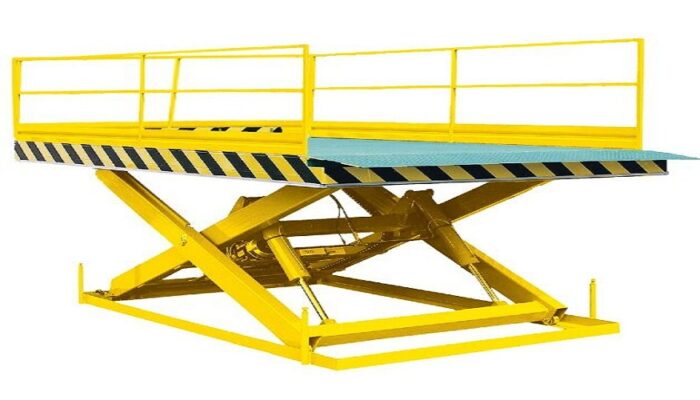
Efficiency and safety are more important now than at any time in our industrial history. Businesses are continuously working towards improving their workflow, minimizing downtime, and increasing productivity throughout their entire business process. One essential device that has proven a boon in different enterprises is the scissor lift tables. Now, you might be wondering, what exactly are Trolleys and Hoists?
Well, these multipurpose systems are intelligently designed to provide a secure way to hoist heavy materials from the ground up to preferred levels. In this blog, we will discuss everything from the design to functionality, applications, and advantages of scissor lift tables across industries. The rest of the article will explain what these devices have in common with other popular safety equipment like scissor lift tables and how they fit into the larger class of material handling devices.
What is a Scissor Lift Table?
Scissor lift tables have a fundamental design that is both simple and very effective. The name comes from the scissor type arrangement that allows the platform to elevate vertically. Typically, this mechanism consists of multiple interconnected, folding supports joined together in a crisscross structure, providing support and balance as the platform transitions from a raised to a lowered position. We cannot, by now, keep our red light didn’t make machines(stop looking good, August. Engineers and designers constantly refined these machines, ensuring they meet not only safety standards but also the full operational efficiency.
Scissor lift tables are characterized by their ability to provide a controlled and smooth raising and lowering of heavy loads. Unlike traditional lifting devices, the scissor mechanism distributes weight evenly along the structure, reducing the risk of imbalance or tipping. This fundamental stability is especially crucial in the movement of delicate or precious products in manufacturing and warehousing settings. And with the introduction of hydraulic or electric systems in modern tables, operating the height adjustment has become much more accurate, enabling users to level the table with incredible ease.
The historical development and theevolution of the Material handling
Scissor lift tables have evolved and improved as industrial equipment continues to innovate. These devices, which were first developed for repetitive tasks and small workshops, have steadily increased in complexity and functionality as decades have gone by. Early models were operated by hand and used mechanical levers and pulleys. Thorough innovations came with the advancements in technology that saw hydraulic power systems and later fully electric mechanisms being adopted across the world. Modern scissor lift tables are efficient and come equipped with highly advanced safety features which include automatic leveling systems, emergency stops and overload protection.
Traditionally, the need for more productivity kept the requirement for cost-effective lifting solutions high to minimize human effort. In several businesses, manually carrying items was a huge source of injuries and a loss of productivity. Then → the powered lifting table changed the game by providing a mechanized solution that caused less strain on workers in exchange for higher overall productivity. This historical context also helps understand the role of material handling equipment in forming safer and more efficient work environments.
Design and Construction
Scissor Lifts Tables are designed based on the balance of form and function. The underlying design is the scissor mechanism which works when metal arms pivot about a single point. This mechanism supplies the needed vertical motion for raising weights to different statures. Newer models tend to feature adjustable platforms, integrated controls, and even better safety barriers.
Scissor lift tables provide a solution for those businesses wanting to modernize their operations and invest in equipment that is waiting to help increase their reliability and efficiency. These tables are creating a safer and more efficient industrial future, by reducing the chance of injury, streamlining workflows, and integrating with digital technologies.
Conclusion
The overview of step ladders which highlights that they have evolved from basic lifting devices to sophisticated industrial technology that keeps employees safe on these increasingly complex and important pieces of equipment. Many havebecome the standard for lifting operations, redefining the industry supporting the working world as we know it. With industries continuously evolving, the role of scissor lift tables will only grow, establishing them as a cornerstone of advanced material handling equipment.
